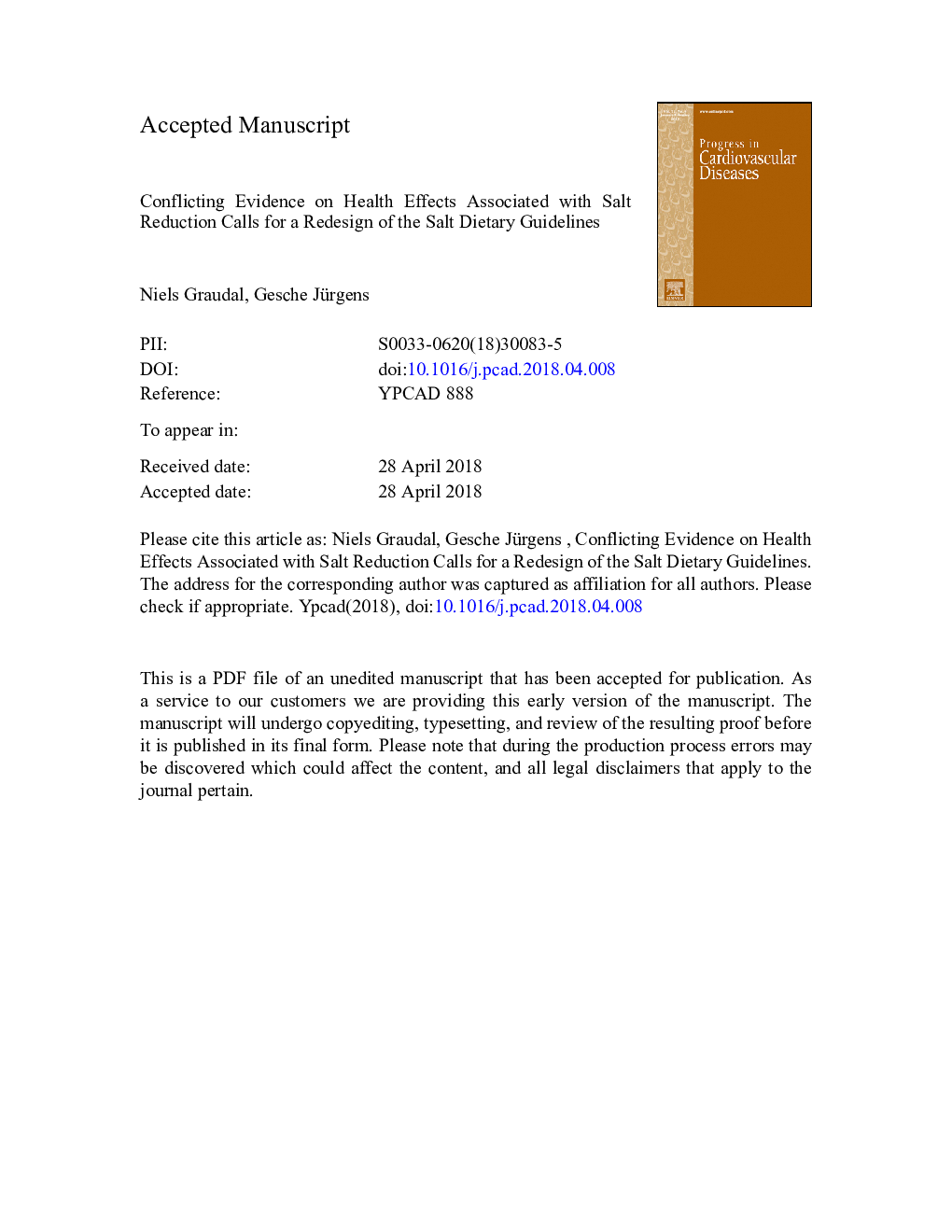| Article ID | Journal | Published Year | Pages | File Type |
|---|---|---|---|---|
| 8675209 | Progress in Cardiovascular Diseases | 2018 | 31 Pages |
Abstract
Ninety-five percent of the World's populations have a mean salt intake between 6 and 12â¯g, which is much lower than the tolerated daily level of up to 55â¯g/d. In spite of this, the recommended upper level by many health institutions is as low as 5.8â¯g/day. When reviewing the evidence for an upper level of 5.8â¯g/day, it becomes apparent that neither the supporting studies selected by the health institutions, nor randomized controlled trials and prospective observational studies disregarded by the health institutions, document that a salt intake below this 5.8â¯g, has beneficial health effects. Although there is an association between salt intake and blood pressure, both in randomized controlled trials and in observational studies, this association is weak, especially in non-obese individuals with normal blood pressure. Furthermore a salt intake below 5.8â¯g is associated with the activation of the renin-angiotensin-aldosteron system, an increase in plasma lipids and increased mortality. A redesign of the salt dietary guidelines, therefore, seems to be needed.
Keywords
RCTsRAASNIHIOMNHLBIAHACDCHTNFDARandomized controlled trialsAmerican Heart Associationcardiovascular diseaseDASHCVDrenin-angiotensin-aldosteroneWorld Health Organizationbody mass indexBMIWaSHHypertensionBlood pressureNational Heart, Lung and Blood InstituteCenters for Disease Control and PreventionNational Institute of HealthInstitute of Medicineheart failureNAMSaltLipidsSalt reductionWHO
Related Topics
Health Sciences
Medicine and Dentistry
Cardiology and Cardiovascular Medicine
Authors
Niels Graudal, Gesche Jürgens,
